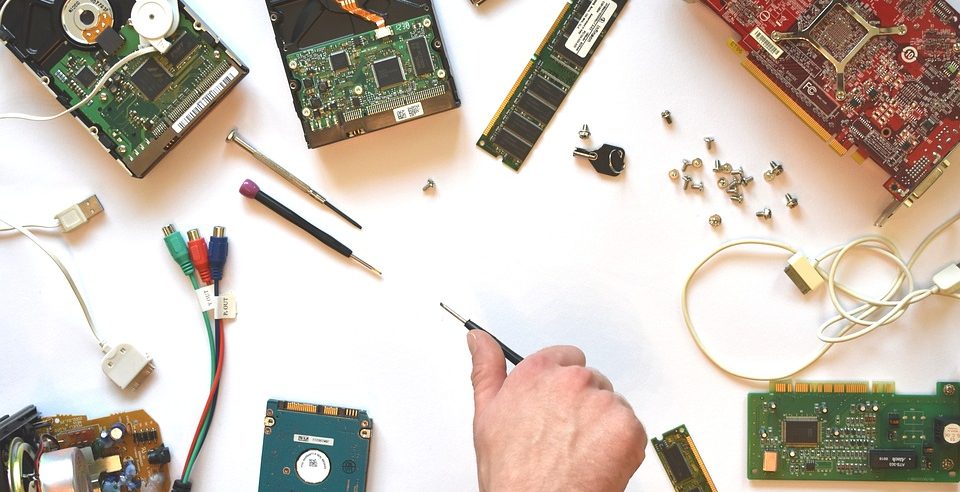Technology is reinventing itself at such a rapid pace that it seems we could lose track in just a blink of an eye. A technology or programming language that seems revolutionary this week could be obsolete in a few days. So we wrote this article for you so you can learn more about the latest cutting-edge technologies that will surely dominate the IT industry in 2021 and the years to come.
It is becoming increasingly difficult to predict technological advances within five or ten years and how companies will adapt to keep up with the frantic pace of change. However, by 2021, IT leaders are betting on RPA (Robotic Process Automation), 5G, AI, and virtual reality, as well as strengthening cybersecurity to prepare their businesses for whatever the future holds. But it is above all the way in which emerging technologies will reshape teams and have an impact on the company that is the red thread of these predictions for the new year.
The following innovations and latest trends in computer engineering also attract the attention of many universities offering computer science and engineering courses on how they can cope-up with the ever-changing technology. Technology is advancing but sometimes, the schools are slow to adapt and many of these innovations are born from technology companies and not from schools, so universities adjust their curriculum to cope-up with the rapid changes.
Intrinsic security, the first steps
While the transformation of the digital space is beneficial for employees and businesses, it can be problematic for the IT department, which must manage extensive access while ensuring an optimal level of security.
Companies with multiple threat detection tools generate a lot of alerts that end up depleting IT services and security teams. That’s why IT managers need to reconsider their approach to cybersecurity and put in place intrinsic security. This requires collecting and exploiting information at all levels to secure users, applications, and devices, including infrastructure.
The Internet of Things, the next big thing
The Internet of Things (IoT) is a network of devices connected to each other. These devices can interact and share data with each other. They can be connected via WiFi, and they share data about their environments and how they are used. These devices have a computer chip that facilitates this exchange. It is expected that more than 41 billion IoT-powered devices will be used by 2025.
The IoT not only allows the connection between different devices but also their remote access. An example of this technology would be to allow you to lock your car doors remotely or to control the temperature of your home from your smartphone. Your Fitbit device or electronic wallet also works on IoT technology. The IoT chips built into the machines help companies evaluate the performance of these machines and facilitate their maintenance.
The advent of hybrid applications
Aggregation of various micro-services will enable companies to create innovative applications and differentiated services and thus stand out from their competitors.
Imagine that you can take advantage of the data services of one cloud provider and the analytics of another provider. Or that a business partner that has service-based people want to make it work with your data.
Innovation is no longer just about what a single cloud provider can provide. A platform can bring all these heterogeneous services together and manage them like nowhere else.
5G, the company’s new paradigm
While many European governments, especially the French government have set the final allocation of frequencies for 5G at the end of June 2020, millions of companies both in the US and EU will deploy private 5G cellular networks over the next decade. By providing capabilities that will prove critical to the industrial environment, this technology can provide businesses with opportunities for growth and productivity gains.
By allowing mobile phones to reach multi-gigabit connection speeds, 5G networks will invite companies to develop their strategies by thinking first or taking mobile into account, generating greater satisfaction for users who spend more time on their mobile phones than on any other device.
Artificial Intelligence (AI) and machine learning, the pillars of tomorrow’s work
Until now, machine learning has required the use of data scientists, capable of combining technological know-how and business expertise to read and translate vast amounts of data. However, companies, especially SMEs/TPEs, do not always have the means to hire these rare and therefore expensive profiles.
Soon, cloud providers will be offering an increasing number of turnkey machine learning services. In fact, more and more companies will rely on these preconceived models to meet their AI needs and further automate data scientist missions. Thus, automation will gradually reshape the job market and prepare the company’s employees for the future world of work.
The cloud, a partial response to the needs of organizations
In an increasingly data-oriented world, companies will look much more deeply at their global use of the cloud, and the help it provides them.
More and more organizations are turning to hybrid cloud computing and edge computing strategies, i.e. solutions that process data at the source. By 2021, businesses will rely on hybrid environments, with advanced computing collecting, processing, and reducing vast amounts of data, which will then be downloaded to a centralized data center or to the cloud.
The digital experience, a vehicle for the loyalty of the company’s employees
The digital experience of employees will become a major differentiator for attracting and retaining talent. This trend will accelerate rapidly as employees place the flexibility of digital tools as a key criterion for applying for and evolving in a company.
IT services will gradually collaborate with the HR and sales teams to improve the employee’s digital experience, from his recruitment to his professional development in the company. By taking full advantage of digital workspaces and improving the employee experience, businesses will be seen as places to work and generate growth.
Conclusion
All of these latest innovations will be vital in the future of computer engineering but who knows? Engineers and computer scientists are continuously developing new things due to competition and we might see another great innovation in a couple of more years to come. All of these changes will only result in a more productive, efficient, and secure working environment and profitable businesses.

